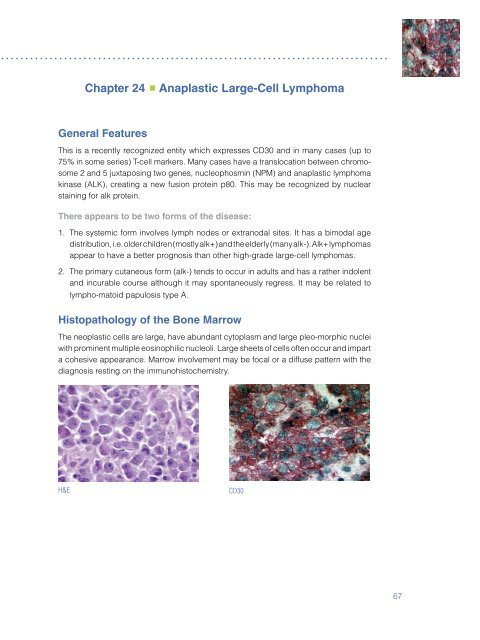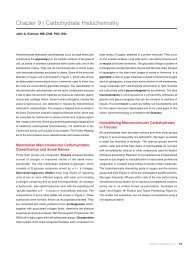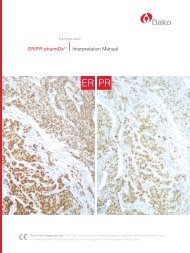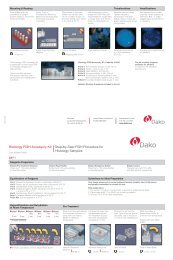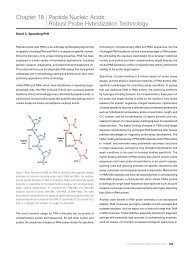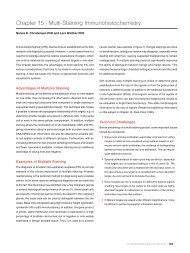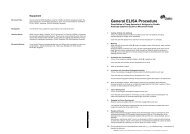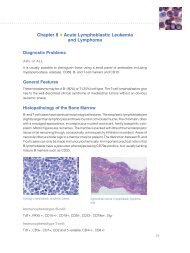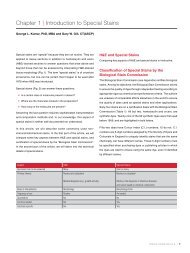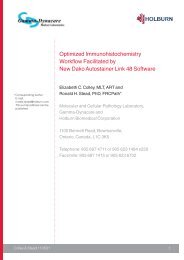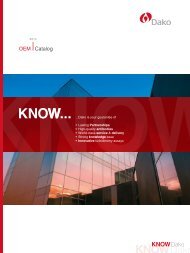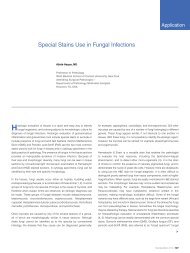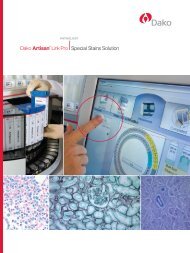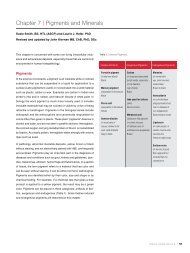Chapter 24 Anaplastic Large-Cell Lymphoma - Dako
Chapter 24 Anaplastic Large-Cell Lymphoma - Dako
Chapter 24 Anaplastic Large-Cell Lymphoma - Dako
Create successful ePaper yourself
Turn your PDF publications into a flip-book with our unique Google optimized e-Paper software.
<strong>Chapter</strong> <strong>24</strong> • <strong>Anaplastic</strong> <strong>Large</strong>-<strong>Cell</strong> <strong>Lymphoma</strong><br />
General Features<br />
This is a recently recognized entity which expresses CD30 and in many cases (up to<br />
75% in some series) T-cell markers. Many cases have a translocation between chromosome<br />
2 and 5 juxtaposing two genes, nucleophosmin (NPM) and anaplastic lymphoma<br />
kinase (ALK), creating a new fusion protein p80. This may be recognized by nuclear<br />
staining for alk protein.<br />
There appears to be two forms of the disease:<br />
1. The systemic form involves lymph nodes or extranodal sites. It has a bimodal age<br />
distribution, i.e. older children (mostly alk+) and the elderly (many alk-). Alk+ lymphomas<br />
appear to have a better prognosis than other high-grade large-cell lymphomas.<br />
2. The primary cutaneous form (alk-) tends to occur in adults and has a rather indolent<br />
and incurable course although it may spontaneously regress. It may be related to<br />
lympho-matoid papulosis type A.<br />
Histopathology of the Bone Marrow<br />
The neoplastic cells are large, have abundant cytoplasm and large pleo-morphic nuclei<br />
with prominent multiple eosinophilic nucleoli. <strong>Large</strong> sheets of cells often occur and impart<br />
a cohesive appearance. Marrow involvement may be focal or a diffuse pattern with the<br />
diagnosis resting on the immunohistochemistry.<br />
H&E<br />
CD30<br />
67
Guide to Bone Marrow Diagnosis<br />
ALK<br />
EMA<br />
Immunophenotype:<br />
CD30+, EMA+/-, CD43+/-, CD2+/-, CD5+/-, CD4+/-, TIA-1+, GRANZYME B+,<br />
PERFORIN+, CD45-/+, CD25+/-, CD15-/+, CD3+/-, p80+/-<br />
Summary of Key Points<br />
• ALCL has a characteristic morphology and immunophenotype.<br />
• ALCL has two clinical forms: Systemic and primary cutaneous.<br />
• Its cohesive growth pattern may mimic metastatic carcinoma.<br />
68


